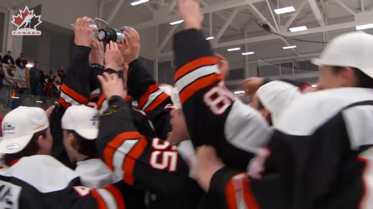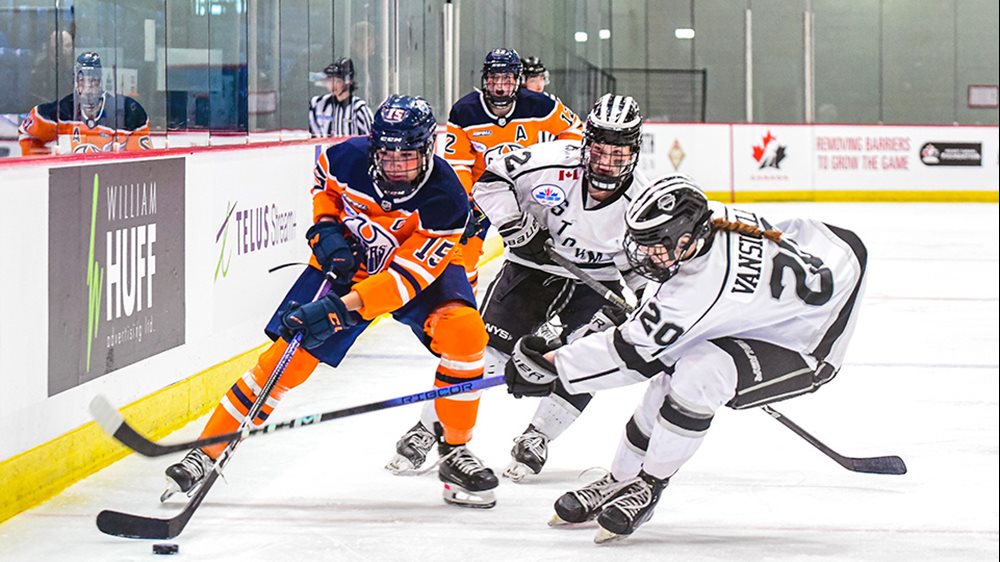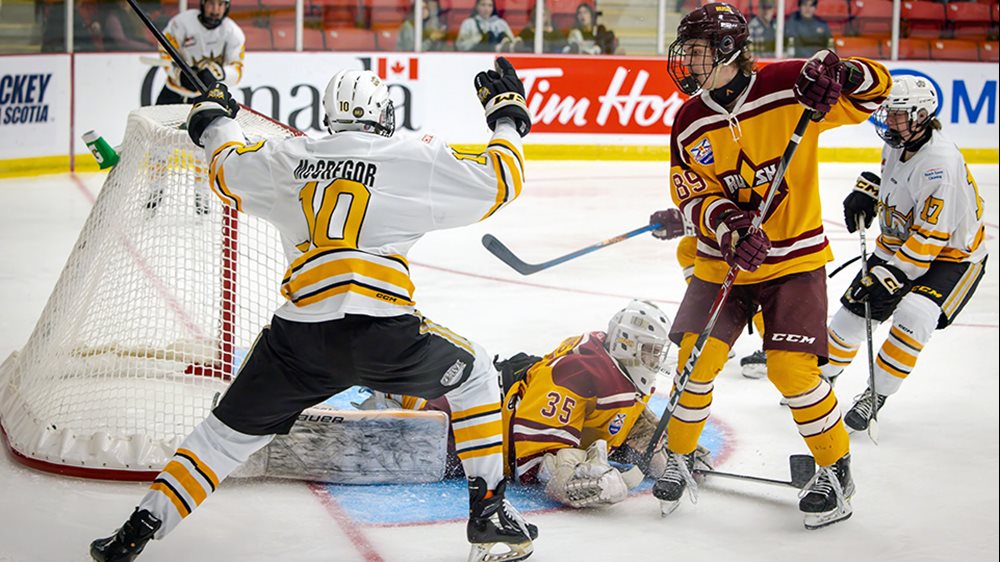
Connecting athletics and academics
Before he embarked on a successful junior hockey career, Riley Stotts thrived in an environment tailor-made for development at the Hockey Canada Skills Academy
Riley Stotts is in the midst of his third WHL season, wears a letter as an alternate captain with the Calgary Hitmen, wore the Maple Leaf at the 2016 World Under-17 Hockey Challenge and is a Toronto Maple Leafs draft pick. But before all of that, he was on the ice as part of the Hockey Canada Skills Academy at Shaftesbury High School in Winnipeg, Man.
Stotts attended the HCSA at Shaftesbury in his Grade 9-10 years from 2013-15 before heading to Swift Current after the Broncos took him 10th overall in the 2015 WHL Bantam Draft. He had 19 points in 74 games in Swift Current before a trade in the early part of the 2017-18 season sent him to the Hitmen.
“It was a lot of fun, something I looked forward to all week at school,” says Stotts of being part of an HCSA. “With all the stress from my classes, it was a huge help to have that break from the classroom when you got to go in the afternoon and play hockey. It was special to be able to do that.”
The HCSA program is one period during the school day, five days a week. Each week is split between on-ice skills training, off-ice sessions and classroom instruction.
Stotts believes that the program was the perfect environment for him during that time. “It was a time in my life where I was trying to be around the people who could help me be the best,” he says. “I learned so much, improved my skills and became a much better player.”
For Eugene Kaminsky, an instructor with the HCSA at Shaftesbury since the program’s inception in 2008, Stotts’ skill was undeniable. But what struck him even more than the talent was Stotts’ attitude and drive to be better.
“Riley was always on the ice as soon as he could be, constantly working on skills,” he says. “I can remember making passes to him over and over again because he wanted to work on the quick release on his shot. I think that’s an indication of his dedication to the sport, and his willingness to become a better hockey player.”
With a focus on skill development, and the ability to train during school hours, it’s easy to see the benefits of the HCSA program for top-end players who are looking to further their hockey careers. But Kaminsky sees the program as a two-way street where students of all skill levels benefit from being in the program together.
“It’s really neat to see the interaction between the top-end players, and some of the players that aren’t as skilled. In my opinion, it gives some of these highly-skilled players and appreciation for the skill they do have, compared to other players that don’t have that natural ability,” he says. “I think both get a lot out of that, the appreciation of the game, the comradery from being out on the ice, and helping out other students.”
It’s a sentiment Stotts agrees with wholeheartedly. “It’s great for everyone, not just people who play at a high level. You can learn a lot, become such a better player and just have a lot of fun out there on the ice.”
For more information: |
- <
- >

























